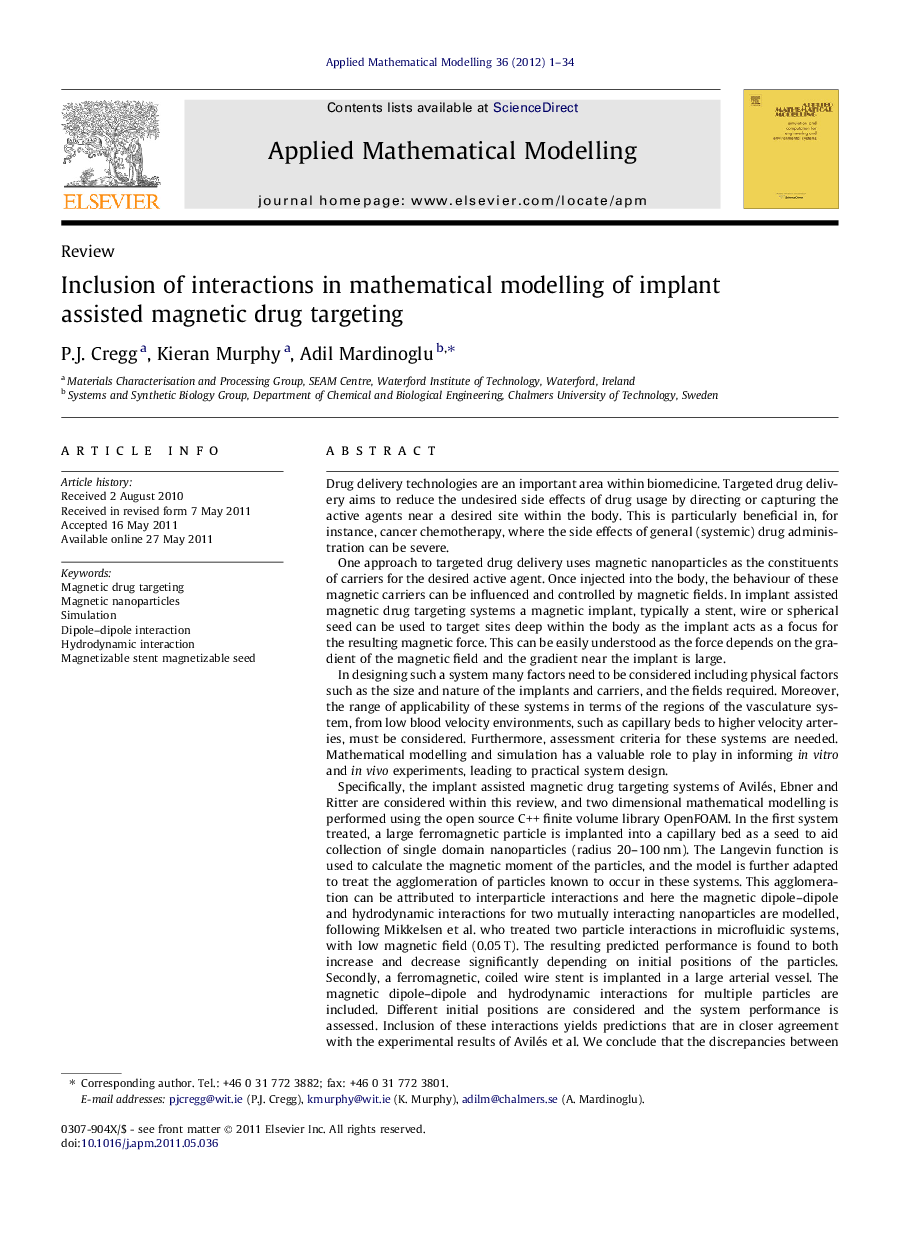| کد مقاله | کد نشریه | سال انتشار | مقاله انگلیسی | نسخه تمام متن |
|---|---|---|---|---|
| 1706025 | 1012448 | 2012 | 34 صفحه PDF | دانلود رایگان |

Drug delivery technologies are an important area within biomedicine. Targeted drug delivery aims to reduce the undesired side effects of drug usage by directing or capturing the active agents near a desired site within the body. This is particularly beneficial in, for instance, cancer chemotherapy, where the side effects of general (systemic) drug administration can be severe.One approach to targeted drug delivery uses magnetic nanoparticles as the constituents of carriers for the desired active agent. Once injected into the body, the behaviour of these magnetic carriers can be influenced and controlled by magnetic fields. In implant assisted magnetic drug targeting systems a magnetic implant, typically a stent, wire or spherical seed can be used to target sites deep within the body as the implant acts as a focus for the resulting magnetic force. This can be easily understood as the force depends on the gradient of the magnetic field and the gradient near the implant is large.In designing such a system many factors need to be considered including physical factors such as the size and nature of the implants and carriers, and the fields required. Moreover, the range of applicability of these systems in terms of the regions of the vasculature system, from low blood velocity environments, such as capillary beds to higher velocity arteries, must be considered. Furthermore, assessment criteria for these systems are needed. Mathematical modelling and simulation has a valuable role to play in informing in vitro and in vivo experiments, leading to practical system design.Specifically, the implant assisted magnetic drug targeting systems of Avilés, Ebner and Ritter are considered within this review, and two dimensional mathematical modelling is performed using the open source C++ finite volume library OpenFOAM. In the first system treated, a large ferromagnetic particle is implanted into a capillary bed as a seed to aid collection of single domain nanoparticles (radius 20–100 nm). The Langevin function is used to calculate the magnetic moment of the particles, and the model is further adapted to treat the agglomeration of particles known to occur in these systems. This agglomeration can be attributed to interparticle interactions and here the magnetic dipole–dipole and hydrodynamic interactions for two mutually interacting nanoparticles are modelled, following Mikkelsen et al. who treated two particle interactions in microfluidic systems, with low magnetic field (0.05 T). The resulting predicted performance is found to both increase and decrease significantly depending on initial positions of the particles. Secondly, a ferromagnetic, coiled wire stent is implanted in a large arterial vessel. The magnetic dipole–dipole and hydrodynamic interactions for multiple particles are included. Different initial positions are considered and the system performance is assessed. Inclusion of these interactions yields predictions that are in closer agreement with the experimental results of Avilés et al. We conclude that the discrepancies between the non interacting theoretical predictions and the corresponding experimental results can (as suggested by Avilés et al.) be largely attributed to interparticle interactions and the consequent agglomeration.
Journal: Applied Mathematical Modelling - Volume 36, Issue 1, January 2012, Pages 1–34